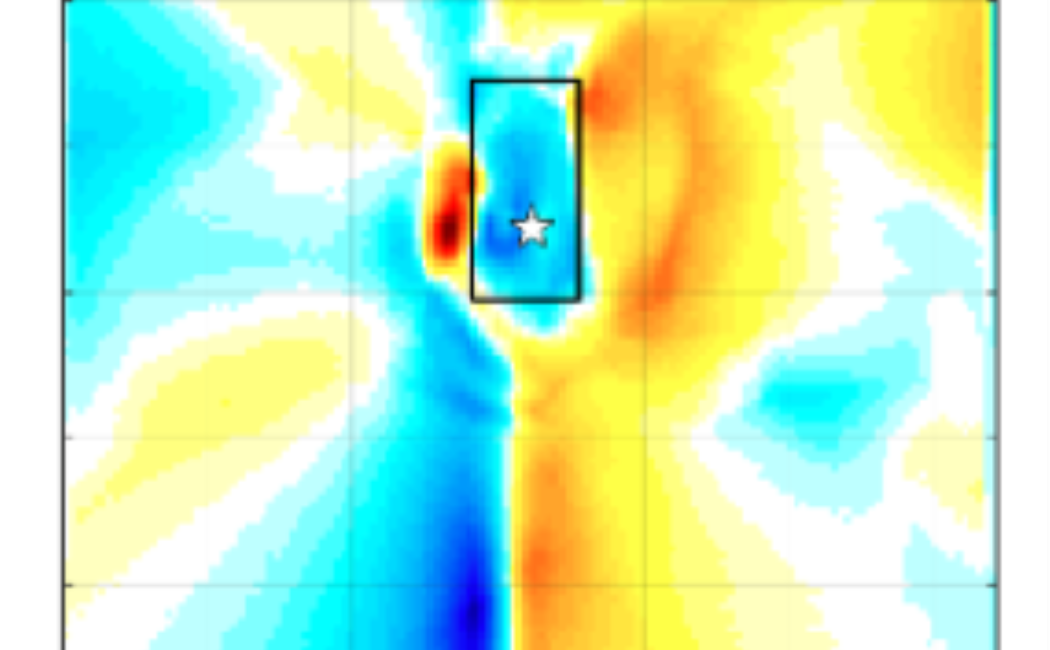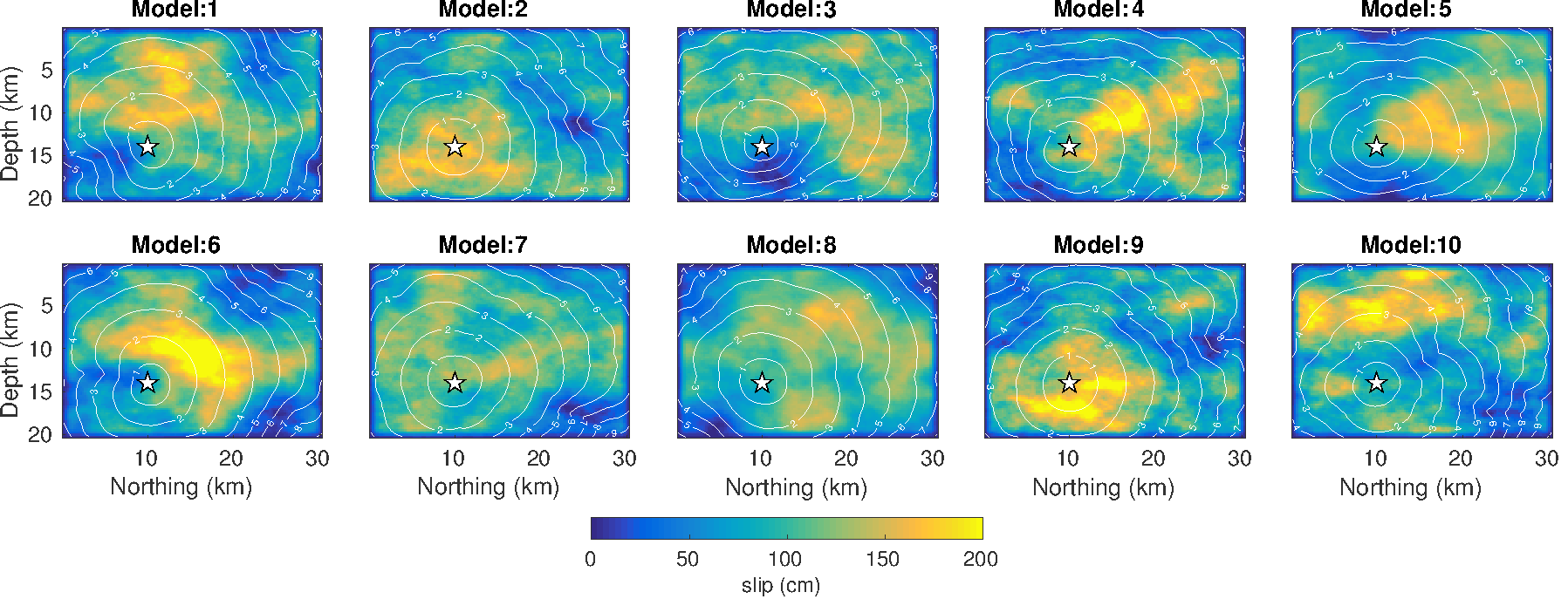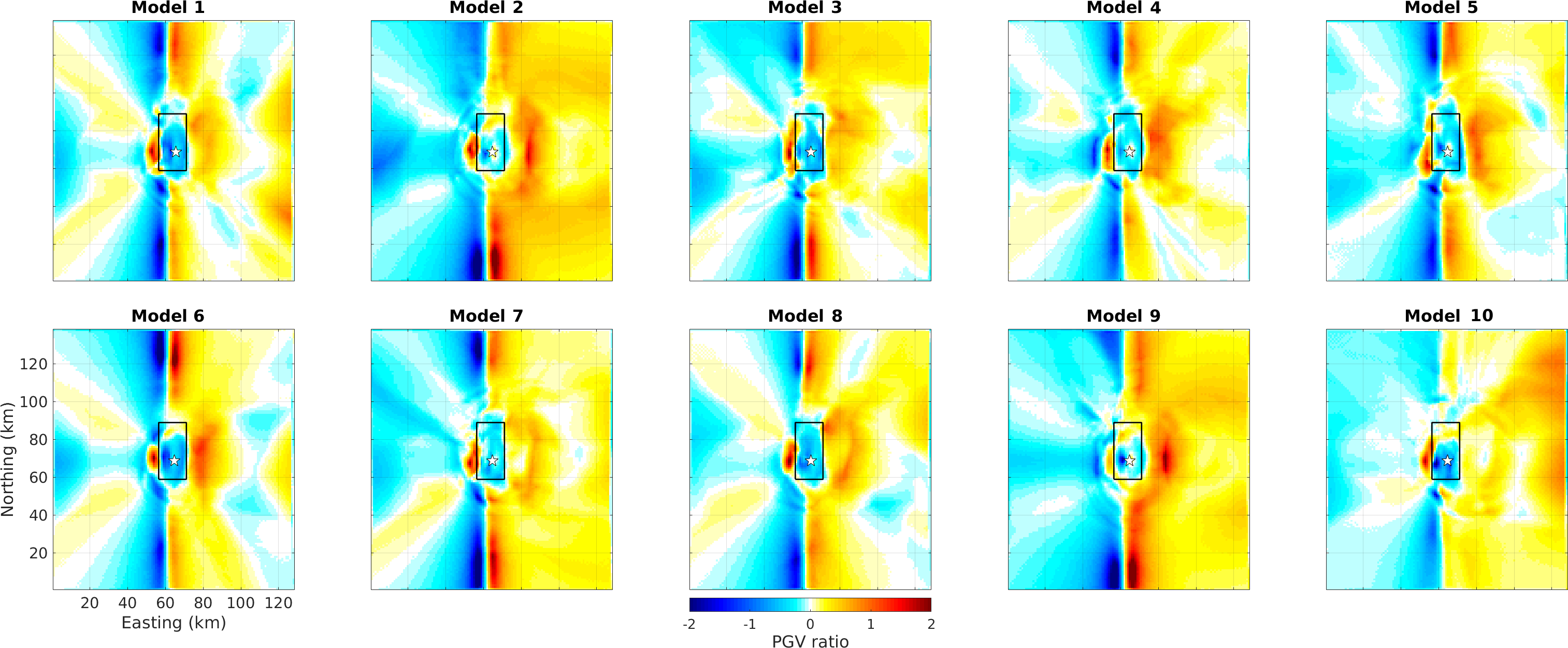


Using a simulation based approach we study the effects of fault listricity through near field kinematic ground motion simulations, where listric faults are defined as curved faults in which dip decreases with depth. The listric profiles used in the simulations are built using a specific shape function and varying the initial dip and the degree of listricity. By also varying other kinematic parameters (e.g., rupture speed and slip distribution; see Fig. 1), we generate ensembles of kinematic source models. These ensembles are then used in a generalised 3D finite difference method to compute synthetic seismograms; the corresponding shaking levels are then compared in terms of peak ground velocities (PGV) to quantify the effects. Our results show two general features: (1) as listricity increases the PGVs decrease on the footwall and increase on the hanging-wall; (2) constructive interference of seismic waves emanated from the listric fault causes PGVs over two times higher than those observed for the planar fault.

Figure 1 Variations of kinematic parameters for ensembles of kinematic source models.
In Fig. 2 we see maps of PGV ratios for various slip distributions (positive values represent higher PGVs for the listric fault). We can see that varying the location of the high slip patch causes focusing of waves on the eastern (hanging wall) side in the area between 75 and 85km, and that overall the listric fault produces higher ground motions on the hanging wall and lower ground motions on the footwall.

Figure 2 PGV ratios for various slip distributions in Fig. 1. Positive values represent higher PGVs for the listric fault.